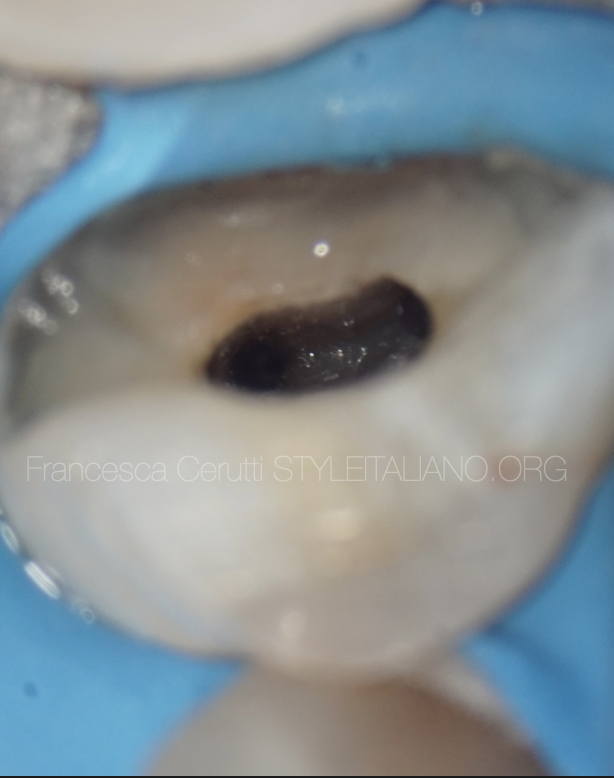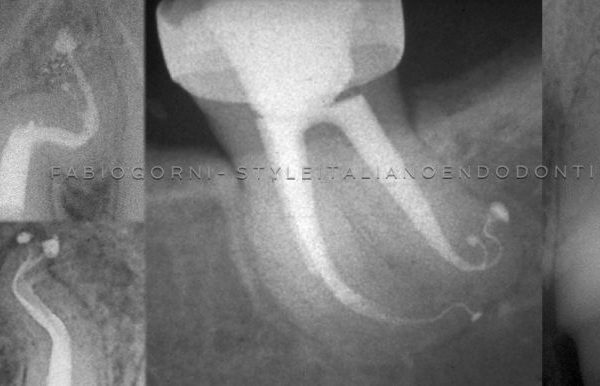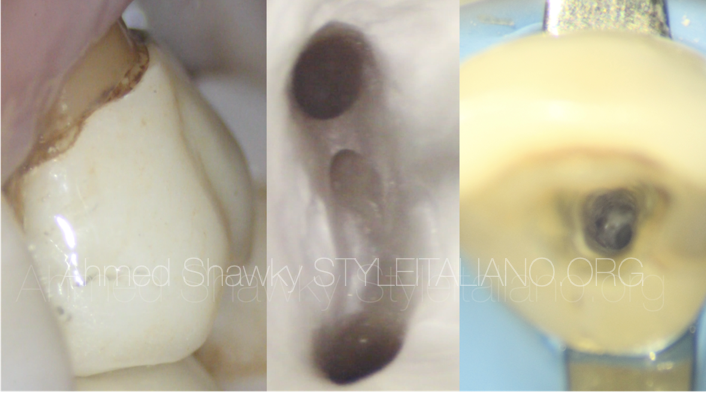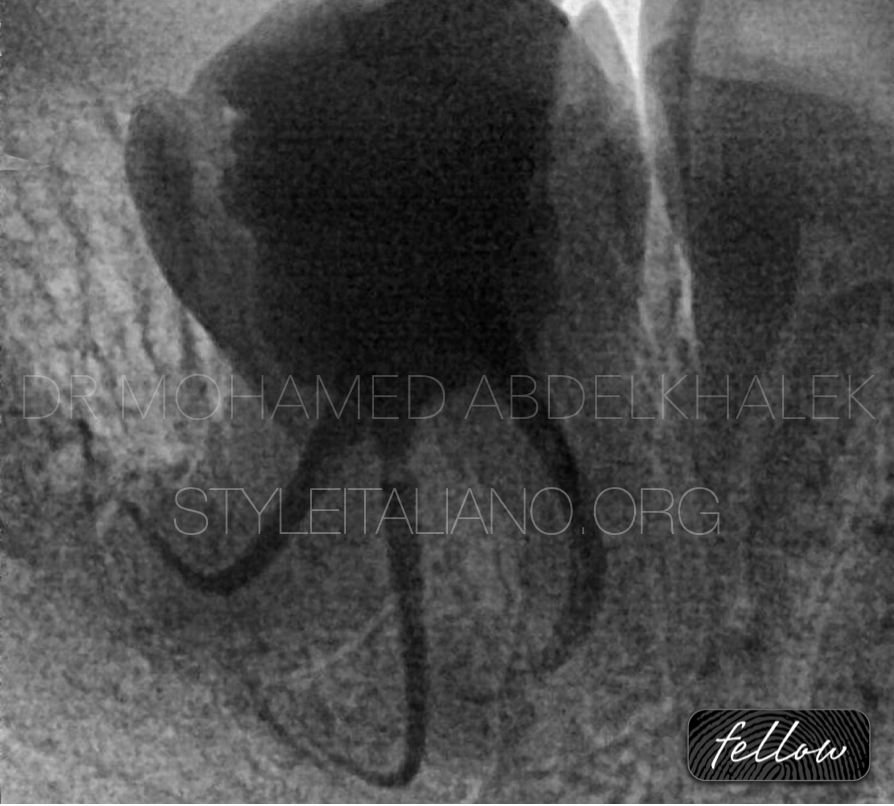
Shaping different anatomies
07/08/2023
Fellow
Warning: Undefined variable $post in /var/www/vhosts/styleitaliano-endodontics.org/endodontics.styleitaliano.org/wp-content/plugins/oxygen/component-framework/components/classes/code-block.class.php(133) : eval()'d code on line 2
Warning: Attempt to read property "ID" on null in /var/www/vhosts/styleitaliano-endodontics.org/endodontics.styleitaliano.org/wp-content/plugins/oxygen/component-framework/components/classes/code-block.class.php(133) : eval()'d code on line 2
Anatomy is one of the biggest challenges in the root canal treatment. During the step of shaping lots of errors may happen like zipping, ledges, transportation, straightening the anatomy and file separation: that’s why in this article we are going to share safe and predictable techniques for instrumenting the root canal system in several types of curvatures.

Fig. 1
Effect of coronal flaring on file separation
Shaping any root canal starts with good pre-operative radiography reading in order to decide a safe and predictable strategy.
In this case we are dealing with a multiplayer curvature: one at the end of the middle third while the other at the apical third. In order to shape this, you need to shape the canal into 2 planes: this avoids many errors especially canal zipping and straightening the anatomy
Negotiating such cases needs good knowledge of your armamentarium. Short K- files size #10 is my choice for better tactile sensation.
Firstly, before trying to reach the working length, coronal flaring in the first 2-4 mm is mandatory to ease the way for the file to get easily in the canal with less stress and forces.
Keep the canal always wet with your irrigant to act as a lubricant during the whole shaping phase.

Fig. 2
Start watch-winding motion, 30 degrees back and forward and apically, but never force the file or use a cutting ended file.
Be patient in this phase till you gain the glide path: always remember that, if you get the glide path right, you’re winning the rotary game most probably.
Don’t get any rotary files involved in such cases before reaching full working length
Shape the canal into 2 planes, do the first plane up to #25 taper 4 firstly, then shape the second plane. The first plane shaping will be as a coronal flaring to the second plane making less stress to the file.
Once you gained your glide path and full working length, start canal enlargement with glide path file as 14,15,17 taper 4 in 2 planes, then you can proceed to enlarge you canal to the optimum taper
#30/.4 was my choice in this case. Master file was taken here for apical gauge and full working length confirmation.

Fig. 3
This is one of the cases that illustrate the importance of the negotiation phase before going to the rotary directly.
The pre-operative radiograph didn’t show such anatomy in this mandibular first molar, remember we are dealing with a 3D object with a 2-D x-ray.
Multi-plane curvatures is one of the most challenging anatomies to deal with; NiTi flexible files are very useful in such cases. I believe martensitic files make the shaping procedure much easier.
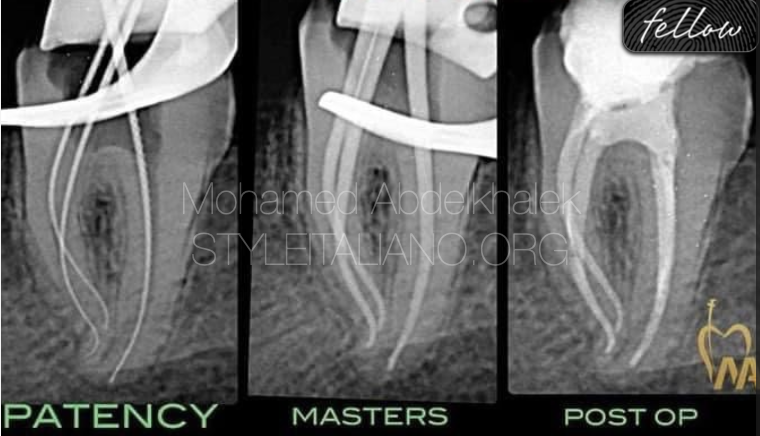
Fig. 4
The shaping is a reflection to your master cone which will eventually reflect upon your obturation.
Good shaping will get you a good apical gauging (tug-back) securing adequate apical seal without overfilling or sealer extrusion.
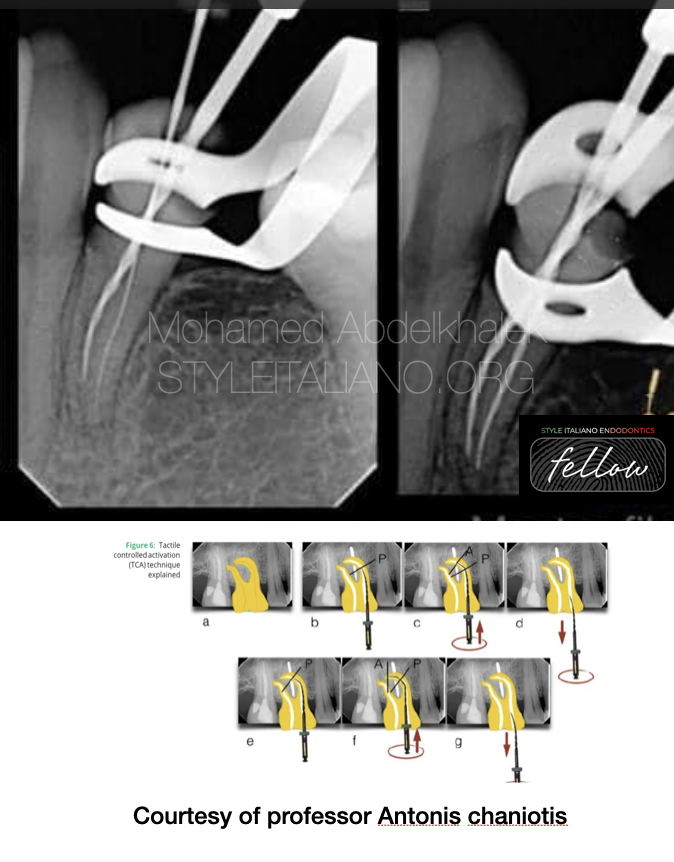
Fig. 5
Write here tone of the most challenging anatomies during the shaping process is the deep split.
The deep split requires good knowledge, scouting skills and magnification.
One of the most common obstacles is shaping the same canal most probably the main one, although get a catch with the manual file or even the rotary file but not within the endo motor. So one of the great ideas is to switch you shaping to TCA technique.
TCA technique refers to tactile controlled activation.
After accessing the pulp chamber and locating the canal orifices, technical patency to length is confirmed. The first file to be used is mounted on the handpiece of an endodontic motor and inserted passively inside the canal until maximum frictional resistance . The file is activated and pushed apically (in-stroke) until the activated file resists further advancement and withdrawn from the canal. After file withdrawal, the file is inactivated the flutes are cleaned and checked for any possible deformations. Irrigation and patency confirmation follows.
The second time that the same file will be inserted passively inside the same canal, it will reach deeper inside the anatomy . Activating the file again the same way will guide the file even more apically closer to length. The work to be done by this file is completed when the file can reach working length without having to activate it and is then withdrawn.
Instrumentation to larger apical preparations is achieved the same way until the desired apical instrumentation width is achieved. TCA technique aims to minimize the time of engagement with an activated file by using file activation only when needed for advancement.
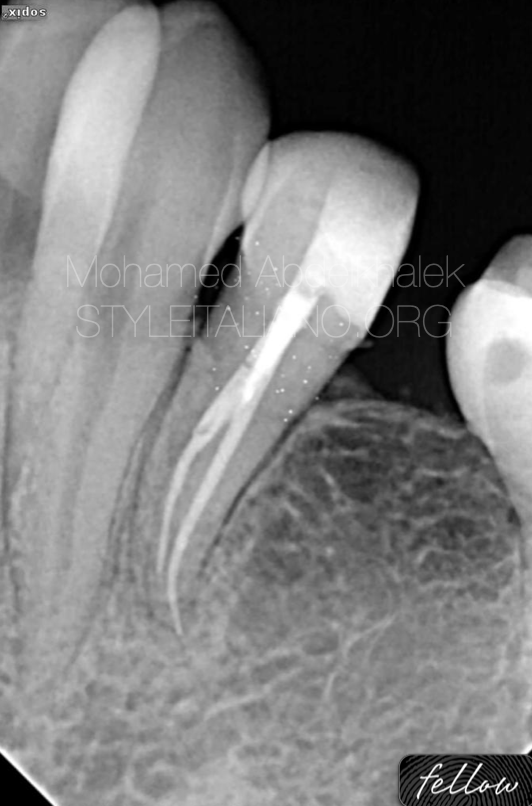
Fig. 6
Post operative X-ray

Fig. 7
ABOUT ME
I'm a dentist was born and raised in Alexandri, I'm really passionate about endodontics and digital dentistry.
Proudly I'm providing elite services to my patient, also have been sharing knowledge with other colleagues inwebinars and local conference.
EDUCATION
2012- 2017
University of Pharos
WORK EXPERIENCE
Dental derma dreams
Full time conservative dentist related
to
micro-scopic and digital
dentistry
• Advanced endodontic in Mazen
dental clinic
Microscopic dentist
Digital dentistry
ADA certificate in endodontics
Co-founder@dentaldermadreams.eg
Conclusions
There are many ways and techniques in shaping the root canal treatment but knowing the anatomy and the biomechanics of your files can make a treatment plan that leads to a feasible, teachable and repeatable result.
Bibliography
Chaniotis A,Filippatos C. The root canal treatment of a dilacerated mandibular premolar using a novel instrumentation approach. A Case report International Endodontic Journal 2016, 50(2) DOI:10.1111/iej.12610
Marshall FJ, Pappin J. A crown-down pressureless preparation of root canal enlargement: technic manu- al. Dept of Endodontics, Oregon health Sciences University, Portland, Oregon 1980.
Goerig AC, Michelich RJ, Schultz HH. Instrumentation of root canals in molar using the step-down technique. J Endod 1982; 8: 550-4.
Morgan LF, Montgomery S. An evaluation of the crown-down pressureless technique. J Endod 1984;10: 491-8.
Fava LR. The double-flared technique: an alternative for biomechanical preparation. J Endod 1983;9: 76-80.
Torabinejad M. Passive step-back technique. Oral Surg 1994; 77: 398-401.
Schilder H. Cleaning and shaping the root canal. Dent Clin North Am 1974 Apr;18(2):269-96
Mullaney TP. Instrumentation of finely curved canals. Dent Clin North Am. 1979 Oct;23(4): 575-92.
Roane JB et al. The “balanced force” concept for instrumentation of curved canals. J Endod 1985; 11: 203-211.



